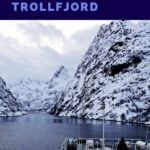Tucked between the towering peaks of the Lofoten Islands, the Trollfjord is a dramatic, narrow fjord renowned for its breathtaking beauty. Here’s everything you need to know about this natural wonder in Northern Norway.
The Trollfjord is a completely unspoilt fjord in the north of Norway. Its natural environment makes it a thriving habitat for various species of birds and sea life. The fjord also has a fascinating history, with many tales to tell.
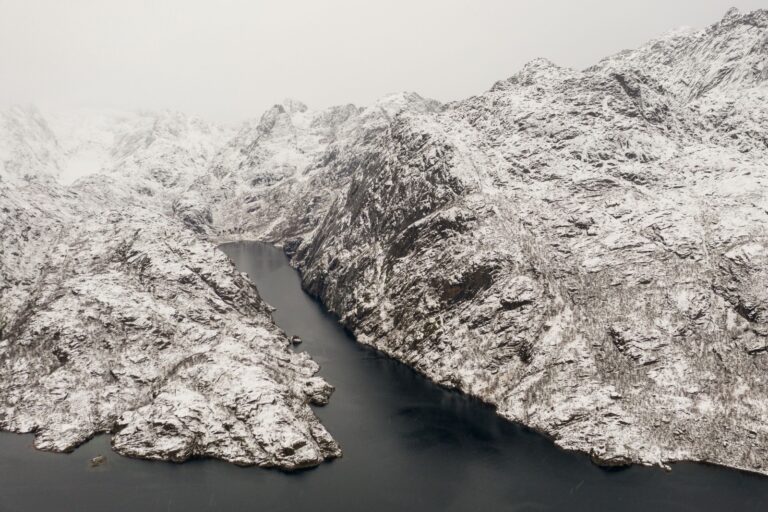
Accessible only by boat, the fjord's steep cliffs rise sharply from the water, creating an awe-inspiring natural spectacle that has become a must-see destination for Arctic explorers and nature enthusiasts.
If you have at least some casual knowledge of the Norwegian outdoors, you’ve most likely heard of the Sognefjord, Lysefjord and the world-famous Geirangerfjord.
But how about a much smaller fjord located far away from the World Heritage listed west Norwegian fjords? All the way up in Northern Norway, in fact?
Tucked away in the far north somewhere between Lofoten and Vesterålen is the spectacular, narrow Trollfjord. It’s a fjord full of natural beauty, wonder and it also has an interesting history. Let’s take a look at northern Norway’s hidden gem of a fjord.
What Makes the Trollfjord Unique?
The most famous Norwegian fjords can be found along the west coast of Norway. So much so, that this region is often nicknamed ‘Fjord Norway' in tourist material. The Trollfjord is a little different because it's located in northern Norway, north of the Arctic circle.
The Trollfjord is also an unspoilt, natural wonder. Unlike many popular fjords up and down Norway, there are no settlements along its banks. As such, it’s only accessible by boat.
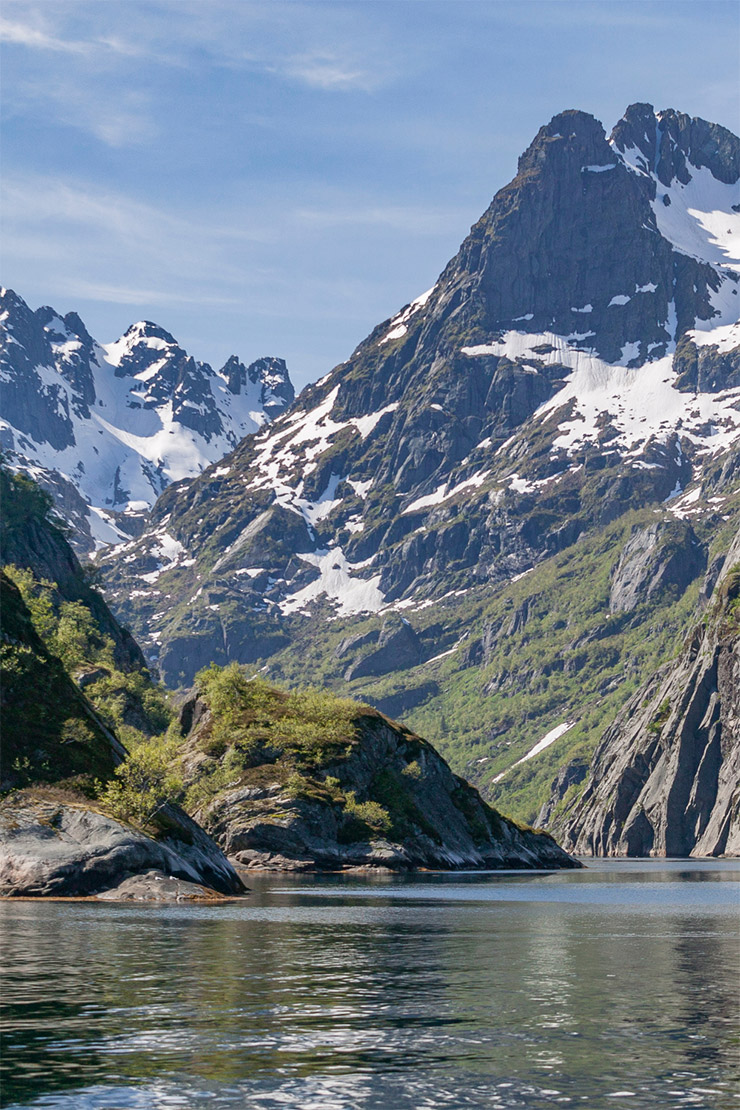
It’s also tiny in comparison with other famous fjords, but that doesn’t take anything away from what it offer tourists. Famous tourists, too.
German Emperor Wilhelm II first visited Lofoten in 1889 after being inspired by paintings at a Berlin art exhibition. He returned several times, and his visits likely sparked tourism to Lofoten. The Trollfjord also featured in the 2016 film Downsizing starring Matt Damon.
By the way, the name comes from the legend of trolls Vågakallen and Hinnøygubben, who fought over pasture at Trollsjøen in Raftsundet. After several quarrels, Hinnøygubben fell and struck his ax in the ridge, creating this stunning fjord.
Where is the Trollfjord?
The fjord is set between Lofoten and Vesterålen, northern islands that experience mild summers and wet winters.
While fjords are known for stretching far inland from their mouth (entrance or start point), the Trollfjord is much smaller. At just 2km (1.2 miles) long, it’s one of the smaller fjords in Norway.
Trollfjord is also one of the narrowest fjords. This means that as you enter by boat, it'll feel as if you can almost touch the mountains to the sides. At its narrowest point, the fjord has a width of just 100 metres (328 feet).
Despite–or actually beacause of–the fjord being so small, it has dramatic and stunning views along its length. Steep cliff faces reach 1,100 metres (3608 feet) into the sky at their highest point.
They're green in the warmer months but snow-covered in the winter. Unfortunately, this beauty means the fjord is generally inaccessible during winter. The risks of snow fall and avalanches are just too great.
The Battle of Trollfjord
On 6 March 1890, the fjord was the scene of what is now known as the Battle of Trollfjord.
The conflict stemmed from local fishing rights between the first industrial steamboats and local rowing fisherman. The traditional seaman were eager to claim and defend the fish that entered Trollfjord, so they formed a blockade at the mouth of the fjord.
The scene was famously depicted in a painting The Battle at Trollfjord by Norwegian artist Gunnar Berg (1863–1893). It's on display at the Gunnar Berg Art Gallery in nearby Svolvær, and is one of the world's most recognisable Norwegian works of art.
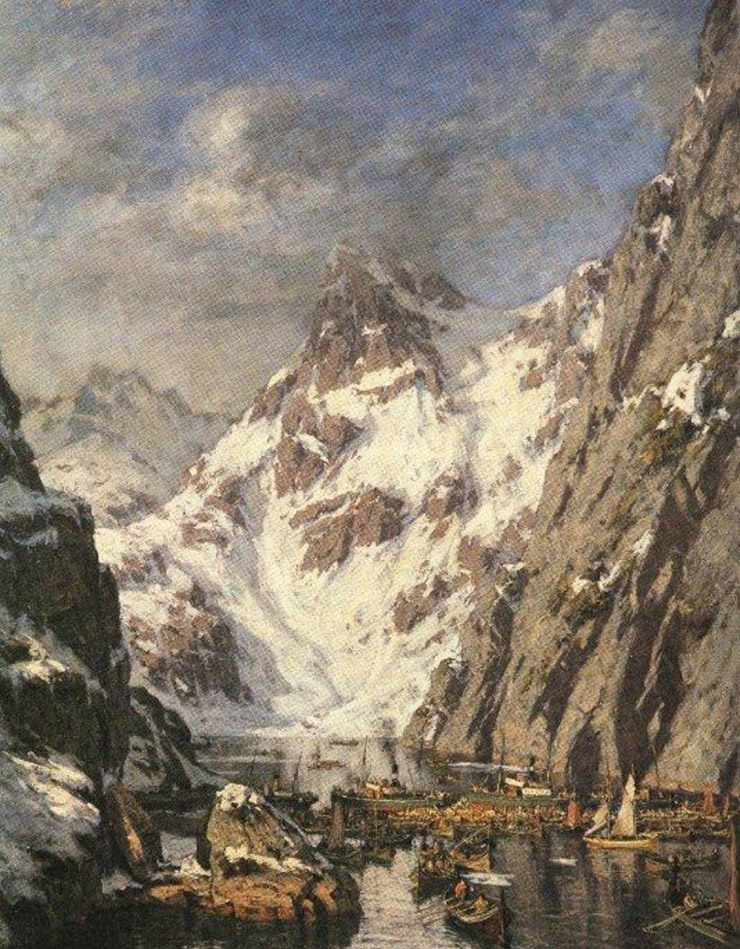
If literature is your thing, then Johan Bojer’s 1921 novel The Last of the Vikings is a very good, informative read. Set in the harsh but beautiful Lofoten Islands, the novel is a moving depiction of man’s resolve and the struggles they face adapting to changing times.
Trollfjord Sightseeing Tours
Because the Trollfjord is only accessible by sea, there are various options for sightseeing tours from Svolvær. Tickets start from around NOK 1,000, typically for a three-hour boat trip.
Depending on the company, food and drinks are provided or usually available for purchase on board.
If you're visiting Norway on the Hurtigruten coastal ferry, then you're in luck. The vessels call by the entrance to Trollfjord and–weather and light conditions permitting–sails into the fjord, allowing passengers the chance to enjoy the spectacular views.
In the colder months, the nearby town of Svolvær focuses more on whale-watching tours. The excursions focus primarily on Orcas (killer whales) in the wet and wild winter months.
Birdwatching and Wildlife
The Trollfjord and its surroundings are unaffected by human interference, which makes for perfect birdwatching conditions.
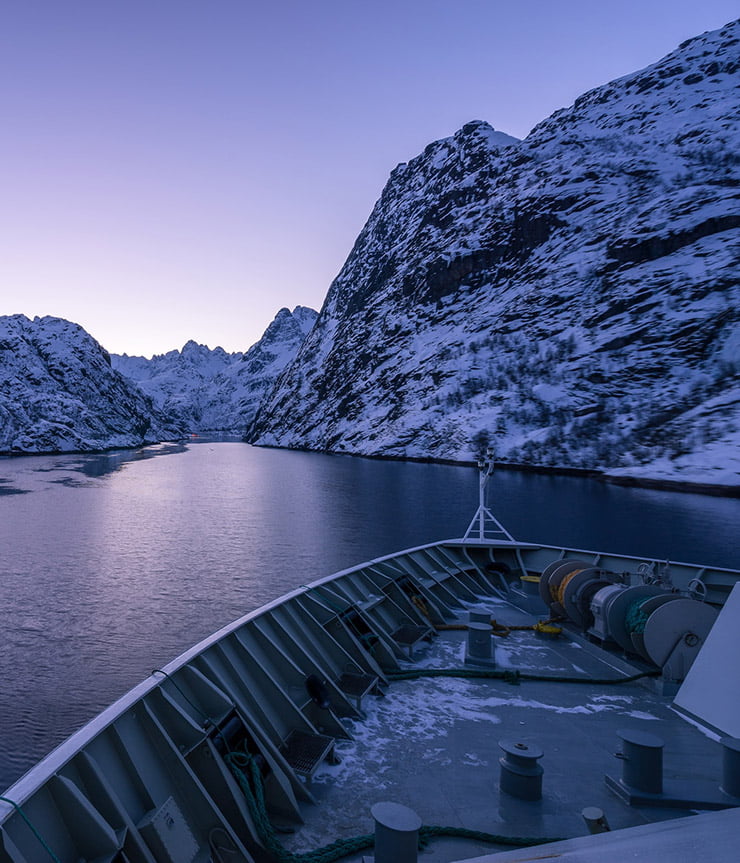
So if entering the majestic fjord itself isn’t quite enough for you, then catching sight of the white-tailed eagles that soar overhead will certainly make your day.
In addition to the feathered variety of wildlife, you might also see various species of whales, porpoises, basking sharks and seals in the water. And if you’re really lucky, maybe even Atlantic white sided/beaked dolphins too.
There are many local fishing trips that offer opportunities to catch cod, pollock, haddock and mackerel. In addition, it’s also possible to catch herring, redfish, catfish, monkfish, flounder and halibut.
Where to Stay by the Trollfjord
Svolvær is the largest town in Lofoten and is a great base if you’re planning a cruise to Trollfjord or the surrounding islands. The town is located in the Lofoten archipelago on the southern coast of the island of Austvågøya.
A few of the main hotel chains that operate in Svolvær, including familiar names such as Thon and Scandic.
If you're on a budget, some cheaper hotels have sprung up in recent years. There are also plenty of cabins for rent in and around Svolvær if you prefer a more rustic experience.

